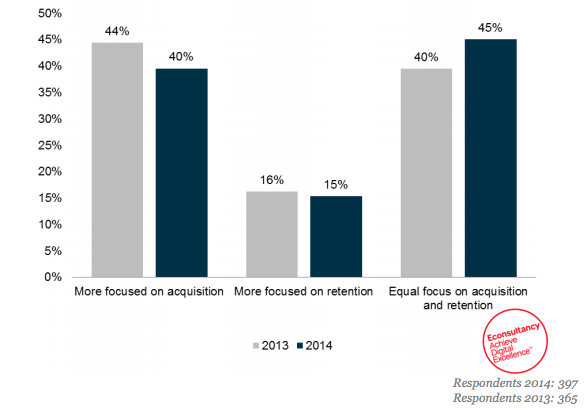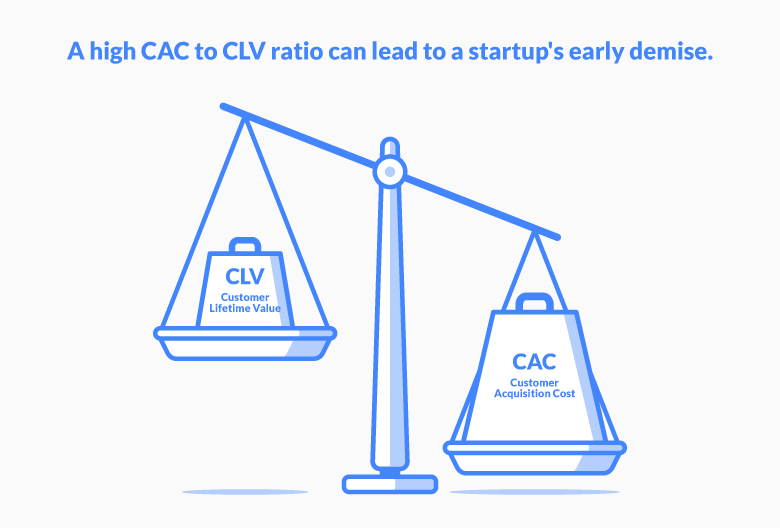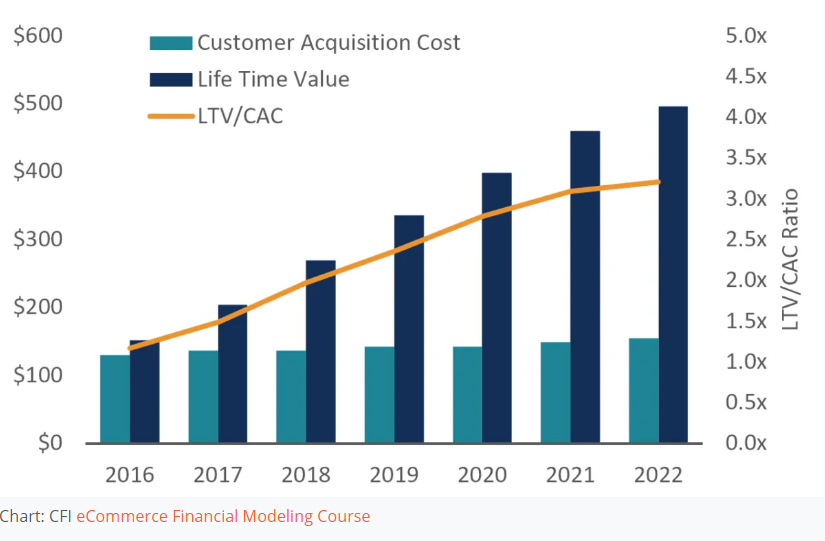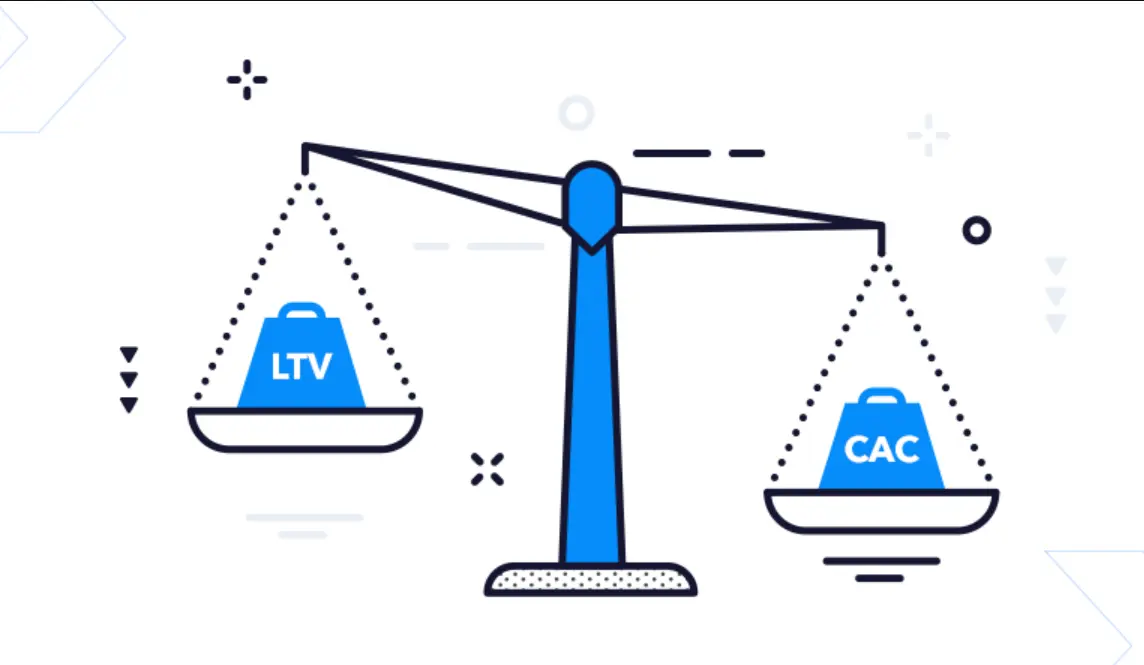A Quick Guide to Average Customer Acquisition Cost in E-commerce
Online businesses know there are many e-commerce metrics they need to be aware of to grow their businesses. But one metric and expense specifically trumps all others. That’s the average customer acquisition cost in e-commerce.
By knowing the average customer acquisition cost, online stores are able to determine how their various forms of marketing are panning out for them.
They’re able to gauge their spending versus their revenues and look out for pitfalls and problems.
In this article, we’re going to discuss:
- What is customer acquisition cost?
- Why CAC is important?
- How to calculate average CAC
- Average customer acquisition cost in e-commerce
- Average Customer acquisition cost by industry
- How to reduce your customer acquisition cost
- Combining CAC and CLV
What is customer acquisition cost?
Customer acquisition cost (CAC) is the cost incurred by a company or store in attracting and acquiring a new customer.
The Corporate Finance Institute defines CAC as “the resources and costs incurred to acquire an additional customer.”
CAC is one of several customer acquisition metrics along with customer lifetime value (CLV or LTV).
CLV measures the value the customer’s relationship with a business or brand.
Customer acquisition measures the rate of growth of a company or store. It shows you how many new customers you’ve added.
But while it’s good to grow, it’s important to know the cost of this growth.
For example, if you sell a product worth $30 and upon calculating your average customer acquisition cost you discover that you’ve paid $40 to acquire each customer, then you have a problem.
With a $30-product and a CAC of $40, your business is on a straight path to financial disaster!
Similarly, if you’re running different ads for your product, you need to see which is the best performing in terms of CAC. That is, which offers the highest return on ad spend (ROAS) and significantly lower cost per customer acquisition.
Not only does calculating your customer acquisition cost help you understand where your money is going but also it gives you an indication of how much you need to generate in profit margin in order to be profitable.
Why CAC is important?
Knowing the average customer acquisition cost in e-commerce or any other industry is important because these costs can make or break your business.
Moreover, once you acquire a customer, you need to work on retaining them. Otherwise, you’d have thrown your money away.
Data shows that it’s 5 to 25 times more expensive to acquire a new customer than to retain a current one.
That said, if a business is just starting out, customer acquisition is a necessity. Hence the need to be aware of the costs so you don’t break the bank.
In addition, customer acquisition is an ongoing process. No business suspends its customer acquisition efforts.
However, they may reduce their focus on acquisition and turn to retention to generate more sales from their current and loyal customers.
A survey by Econsultancy found that companies often focused more on customer acquisition than customer retention. Of the 1,000 surveyed digital marketing and e-commerce professionals, 44% said they focused more acquiring new customers.

How to calculate average CAC?
Now it’s time to calculate your customer acquisition cost.
The customer acquisition cost formula can be calculated by dividing your sales and marketing expenses by the number of your new customers.

Your sales and marketing costs including your ad spend, any subscriptions that you use for marketing purposes, and staff and agency costs.
“Don’t forget to include the amount you spend on storing, producing and shipping items. These costs are essential because you are running an e-commerce business,” stresses Finance Insight Matters.
By understanding how CAC works and how to calculate it, you can work on increasing your return on investment (ROI) from your ads and your acquisition initiatives.
This, in turn, will translate into higher revenues and eventually a bigger profit margin for your business or store.
Related read: What You Need to Know About the Difference Between ROI and ROAS
Average customer acquisition cost in e-commerce
If you’re just launching your e-commerce store, you’re definitely going to have to pay for customer acquisition.
But on the long-term, you should be able to reduce the average customer acquisition cost for your e-commerce website as you work on retaining customers.
Customer acquisition in e-commerce often involves using several digital marketing strategies or channels. These can include search engine optimization (SEO), paid ads or search engine marketing (SEM), social media marketing, content marketing, email marketing, among others.
Several of these marketing types involve using e-commerce automation tools, specifically marketing automation which helps business owners or marketing managers speed up their marketing process.
As for the average customer acquisition cost in e-commerce, data by ChatterBuzz puts a median estimate using Google Paid Search campaigns at $45.27.
Naturally, this figure will differ based on the type of product you’re selling as an e-commerce store.
If you’re selling high-end products, chances are your average CAC will be $45.27 or higher. On the other hand, if you’re selling lower-end products, the figure may be smaller.
Average Customer acquisition cost by industry
Since different products may have a different average CAC, it’s only fair that this metric differs from one industry to another.
Data compiled by Propeller has found that average customer acquisition cost by industry stands thus:
- Travel: $7
- Retail: $10
- Consumer Goods: $22
- Manufacturing: $83
- Transportation: $98
- Marketing Agency: $141
- Financial: $175
- Technology (Hardware): $182
- Real Estate: $213
- Banking/Insurance: $303
- Telecom: $315
- Technology (Software): $395
How to reduce your customer acquisition cost?
Having a high customer acquisition cost is bad for your business because it hurts your revenues and profits.
So are there ways to reduce your average customer acquisition cost?
There sure are. Here are 6 ways to reduce your CAC:
1. Continuously modify your customer acquisition strategy
In order to acquire customers efficiently, you’ll need to have a customer acquisition strategy. But more importantly, you’ll want to be constantly updating and modifying it.
After all, it’s not written in stone and your revenues and profits will thank you for it.
Look at the different opportunities and channels you’re using to acquire new customers and the costs of each.
Is there a channel that’s attracting fewer customers? Or maybe there’s a channel that’s taking up too much spending and resulting in a higher average CAC. Adding new channels can help you decrease your average CAC, while also keeping you up-to-speed on marketing and e-commerce trends.
2. Focus on your website’s accessibility for better conversions
An accessible and easy-to-use website converts better and entices customers to come back.
This means you’ll need to have attractive designs and good copy.

You’ll also want to optimize your landing pages to convert. You can tweak and A/B test your copy and designs to see which works best with your newly-attracted customers.
Spur your e-commerce and marketing efforts with these 34 E-Commerce Quotes from Industry Professionals
Don’t forget to include your call to action wherever you deem fit.
And make sure your website is mobile-friendly. After all, people are using their mobile phones for online shopping now more than ever before.
Statista forecasts that 53.9% of all retail e-commerce will come from mobile commerce in 2021.
3. Cut costs
Cost-cutting is the oldest trick in any book. However, it’s important to know when and where to cut your costs.
A cost-cutting option is reducing the cost of goods sold (COGS), which will boost your profit margin, allowing you to boost your customer acquisition spending.
You can lower your COGS by trimming your shipping costs. This can include renegotiating your deals with couriers, shipping internationally by sea rather than by air freight, or even getting volume discounts from suppliers.
Cutting costs can also mean finding cheaper warehouses for your inventory.
4. Find low-cost niches
While this may not be applicable for many e-commerce businesses, those just starting out can consider niches that are less competitive and therefore less costly.
5. Cut down on your sales cycle
One of the areas that result in higher costs per new acquisition is the overall sales cycle. The longer the cycle, the more costly it is to acquire a new customer.
So, one way to reduce your costs would be to shorten your sales cycle. This will help you reduce the time taken to acquire a new customer and therefore the costs associated with it.
Look at your sales funnel and find out where customers leave or abandon the process.
“If your sales communications aren’t closing the deal quickly enough, revamp your messaging or adjust your vetting process for efficiency. Qualify leads early to ensure your team is only spending time pursuing those that are likely to become customers in the near future.” – Propellercrm.com
6. Retain your customers
Ultimately, your goal after acquiring new customers is to retain them and have them come back to your store regularly.

That’s why part of your overall customer acquisition strategy would be to focus on customer retention. This is especially important with customers who offer a high CLV.
These are the customers who will give you the most value during their relationship with your store.
There are many ways to retain customers including creating a loyalty program, offering strong customer support, and enhancing your user experience, among others.
Combining CAC and CLV
We’ve mentioned that customer lifetime value is often associated with the cost of customer acquisition.
The reason is, while you need to keep track of your customer acquisition costs, you want to estimate of the length and value (gross margin) of your customer’s relationship with your product or store.
This is where CLV comes in. It measures the value of this relationship. It’s also a measure of retention.
Even if you’re selling a one-time product like a swimming pool, you can have your customer come back for additional services related to that swimming pool. These can include pool cleaners, replacement parts, upgrades, and so on.

If the cost of acquiring a new customer is higher than their CLV, then you’re losing money with each acquired customer.
On the other hand, if you’re not spending enough on customer acquisition, you may be losing out on potential customers.
“If your lifetime value is 10 times higher than your acquisition cost, your profit per customer flourishes,” notes Finance Insight Matters. It adds that your CLV ratio to cost per acquisition “should be somewhere around four times what you spend on acquisition cost.”
In the same vein, this is what the Corporate Finance Institute says about the CLV-CAC ratio:
“If the LTV/CAC ratio is less than 1.0 the company is destroying value, and if the ratio is greater than 1.0, it may be creating value, but more analysis is required. Generally speaking, a ratio greater than 3.0 is considered “good” but that’s not necessarily the case.”

DemandJump also estimates the “ideal LTV to CAC ratio [at] 3:1.”
It’s important to remember that just as the average customer acquisition cost differs from one product to another in e-commerce, the CLV/CAC ratio will also differ. Naturally, different industries will have different ratios.
Conclusion
Acquiring new customers is a process. If you’re just starting out, customer acquisition is your first step. The second is retention.
As you gradually retain customers, you’ll still be looking to acquire new ones, whether for new products you’re launching or to expand your customer base.
At the same time, figuring out the average customer acquisition cost in your e-commerce business will help you ensure that your business is moving forward not setting you back.
CAC isn’t just about acquiring lots of customers at the cheapest cost. It’s about acquiring those customers who will have the longest – or a fairly long – relationship with your business.
To increase your chances of higher profitability, you’ll want to understand customer behavior and then segment those customers, retain them, and use various e-commerce metrics to ensure you’re on the right track.
Part of understanding customer behavior is knowing where customers are on the different social media platforms and in the buying cycle.
At the end of the day, you want to get the highest ROI for your marketing efforts and ad spend.
Got questions about e-commerce metrics? Ask us in the comments below.
